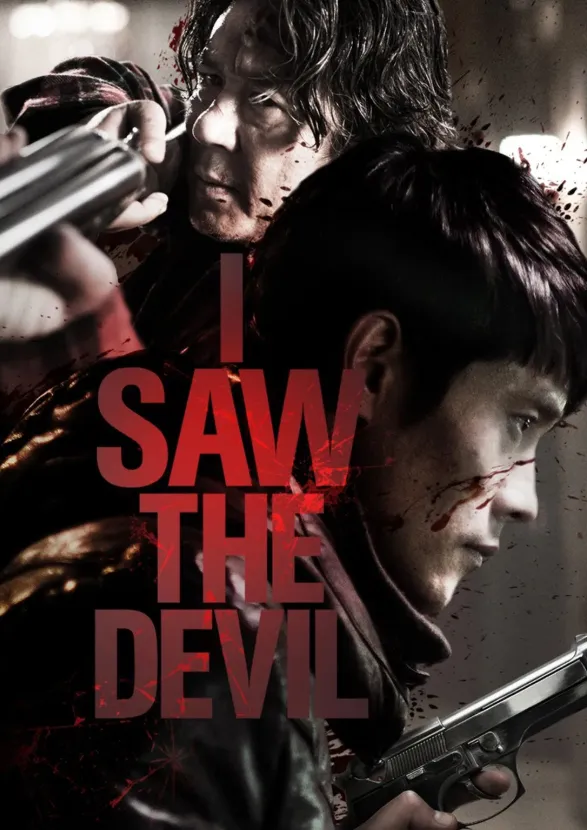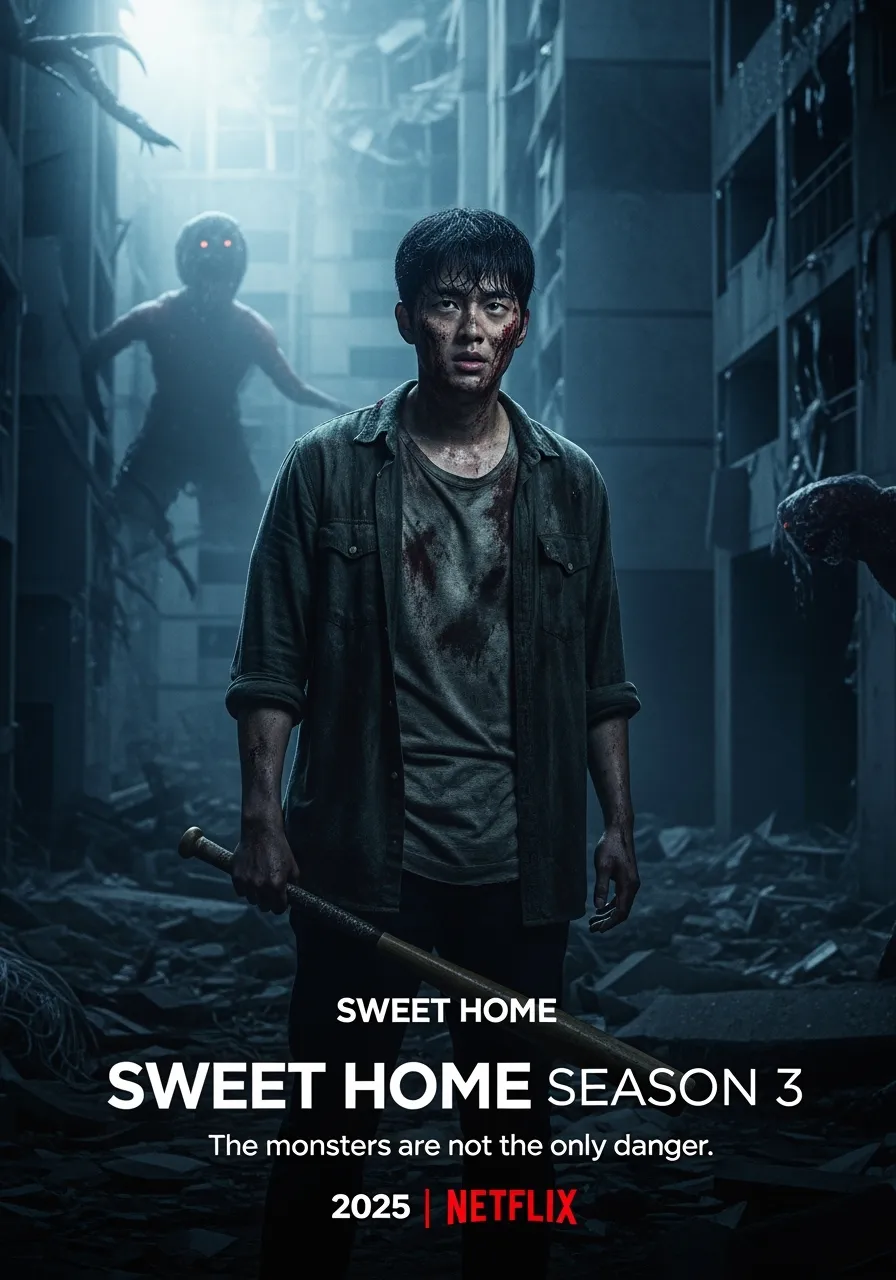Director: Kim Jee-woon (A Tale of Two Sisters, The Good, the Bad, the Weird)
Writer: Park Hoon-jung
Cast: Lee Byung-hun, Choi Min-sik, Jeon Gook-hwan, Cheon Ho-jin, Oh San-ha
Genre: Psychological Thriller / Action / Horror
Runtime: 144 minutes (original cut) | 141 minutes (international cut)
Release Date: August 12, 2010 (South Korea)
Introduction
Few revenge thrillers dare to show the emotional, moral, and psychological cost of vengeance with the uncompromising clarity of I Saw the Devil. Kim Jee-woon’s 2010 masterpiece is brutal and unflinching, yet meticulously crafted — a film that immerses you in its icy atmosphere while confronting you with the question: When you hunt a monster, how long before you become one yourself?
Story in Detail
The Inciting Horror
On a snowy night, Jang Kyung-chul (Choi Min-sik) prowls a rural road in his van. His chosen victim is Joo-yeon, a young woman whose car has broken down. The scene is deceptively calm — until sudden, shocking violence shatters it. Joo-yeon is murdered in a manner that sets the tone for the rest of the film: graphic, terrifying, and deeply personal.
Joo-yeon’s fiancé, Kim Soo-hyun (Lee Byung-hun), is an elite National Intelligence Service agent — highly skilled, disciplined, and, now, utterly broken. The police quickly identify Kyung-chul as a prime suspect, but Soo-hyun has no interest in arrest. He wants to destroy him.
The Game of Capture and Release
Rather than kill Kyung-chul outright, Soo-hyun crafts a chilling strategy:
-
Hunt him down.
-
Beat and torture him.
-
Release him.
-
Repeat.
It’s a punishment designed to make the killer live in fear — to suffer, knowing death could come at any moment. But this isn’t justice. It’s a sadistic game, and Kyung-chul quickly adapts, turning the tables by targeting more victims to draw Soo-hyun out.
The Moral Descent
With each cycle, Soo-hyun’s brutality grows. In one scene, he smashes Kyung-chul’s ankle in a back-alley confrontation, leaving him howling in agony. In another, he plants a GPS tracker and a scalpel-like blade inside him so he can track and torment him again later.
The film constantly asks: Is Soo-hyun still the hero? By mirroring Kyung-chul’s cruelty, he edges closer to the very evil he’s trying to eradicate.

Kyung-chul: The Unrepentant Predator
Choi Min-sik’s Kyung-chul is one of modern cinema’s most terrifying villains. He’s not a tragic figure — he’s pure malice, taking pleasure in killing and manipulating. Between his encounters with Soo-hyun, he commits more murders, even staying with cannibalistic acquaintances. These detours deepen the depravity of his world and show that Soo-hyun’s plan endangers far more than its intended target.
The Final Confrontation
By the climax, both men are irrevocably changed. Soo-hyun’s vengeance is complete — but the emotional toll is devastating. Kim Jee-woon avoids a neat resolution, leaving us with the image of Soo-hyun breaking down, as if realizing too late that revenge hasn’t cleansed his pain… it’s only hollowed him out.
Performances
-
Lee Byung-hun plays Soo-hyun with quiet intensity. His stoic surface hides a man unraveling under grief, and the gradual shift in his body language — from precision to raw aggression — is masterfully controlled.
-
Choi Min-sik is mesmerizingly vile. He inhabits Kyung-chul with a mix of casual cruelty and explosive violence, making every appearance unsettling. His unpredictable energy keeps both the characters and the audience on edge.

Their chemistry — predator and predator — is the lifeblood of the film. Every scene they share feels like a high-stakes duel.
Direction & Cinematography
Kim Jee-woon combines artful composition with unflinching violence:
-
Visual motifs: Snow and water reflect coldness and inevitability. Narrow hallways and tight interiors create claustrophobia.
-
Color palette: Muted grays and blues dominate, emphasizing moral decay.
-
Long takes: Violence is often shown in extended shots, forcing the audience to stay in the discomfort rather than cutting away.
The sound design is equally meticulous — moments of silence amplify tension, while sudden bursts of violence jolt the senses. Mowg’s score is haunting, alternating between mournful strings and oppressive bass.
Themes & Analysis
-
The Corruption of Justice: Soo-hyun’s journey shows how revenge erodes moral boundaries until there’s nothing left to protect.
-
Cycle of Violence: Every act of vengeance creates ripples of new harm — innocent people suffer as collateral damage.
-
Predator and Prey Dynamics: The film blurs roles, making it impossible to tell who’s truly in control.
-
Moral Ambiguity: The ending denies catharsis, reinforcing that revenge offers no true closure.
Why It Stands Out
-
Uncompromising Violence with Purpose: The brutality serves the story, making the audience feel the cost of vengeance rather than glamorizing it.
-
Two Iconic Performances: Lee Byung-hun and Choi Min-sik are magnetic opposites — one cold and methodical, the other chaotic and sadistic.
-
Masterclass in Tone: Balances horror, thriller, and drama without losing narrative focus.
Verdict
I Saw the Devil is not just a revenge movie — it’s a moral gut punch. It strips away the romanticism of retribution, showing its corrosive impact on the human soul. It’s brutal, haunting, and unforgettable.

Rating: ★★★★½ (4.5/5)
Best For: Fans of Oldboy, Memories of Murder, The Chaser, and psychological thrillers that confront the darkest corners of human nature.
Final Word:
By the end of I Saw the Devil, you may find yourself questioning who the real devil is. And that’s exactly the point.

-1747716802-q80.webp)
-1740282288-q80.webp)

-1748427036-q80.webp)